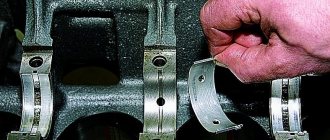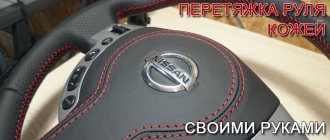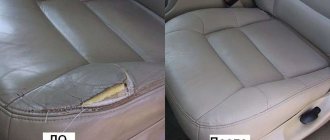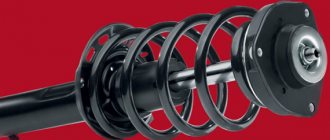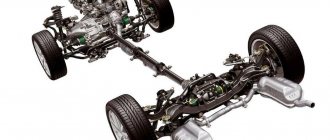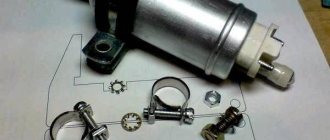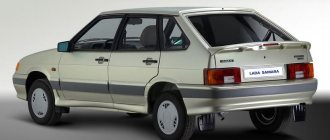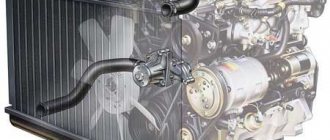- home
- Useful
- …
Today I want to think about a rather hackneyed topic - Russian car assembly. Many simply do not accept cars assembled in Russia; many, on the contrary, only buy Russian-assembled cars. What are the pros and cons of this build and why do many people dislike it so much? Let's think about this today...
Let me make a reservation right away: I have no interest in advertising our country, or any foreign one. To be honest, the purpose of the article is to think about whether Russian car assembly is so bad? I myself witnessed a conversation when one guy said to another: “What about your new Volkswagen Tiguan, it’s made in Russia, but my Toyota Corolla is already a year old, and no matter what, it doesn’t break down - it’s Japanese.” Moreover, the conversation was in all seriousness, it seems to me that the guy in the Volkswagen was somehow shy, as if he had bought Logan! Yes, damn it, it’s simple! If a Japanese woman, even if old and technically imperfect (we all remember about Toyota’s buggy robots, which were later replaced by an old 4-speed automatic), then you’re just cool! People, wake up!
What's bad about Russian car assembly?
Yes, our people are hot-headed, there is always the option that you can run into a car that was assembled by “narrow-minded” people in production. Perhaps something wasn’t tightened up, it wasn’t completed. And there are a lot of videos on the Internet showing, for example, wheel bearings being hammered in with a hammer. But guys, I have a lot of people who work in factories where foreign cars are assembled, this is not on all cars. And after assembly, there is a check of the assembled products, and the more serious the brand, the more complex and thorough these checks are. What I'm getting at is that if a wheel bearing is hammered in, then when checked, it will die very quickly, and such a car will be sent for modification.
Of course, you can argue that even after selling a car of an expensive brand, but made in Russia, minor troubles may arise. I read on one forum that a guy, after buying an AUDI, discovered that the wheel alignment settings were off, the car was pulling to the right, but after he applied for warranty, everything was corrected for him and he has been driving for two years now without problems. There really are little things like that. After the “collapse” of perestroika, the working class of which the country was proud was destroyed, now not many people want to go to a factory and work at a machine or in assembly, everyone wants to be managers and shovel money without producing anything, but only reselling Chinese goods. That’s why our assembly is lame, there is no pride in the fact that you work at a factory. But most likely the opposite. This, in my opinion, is where all the problems come from. That’s why they post all sorts of things online, videos of how well they smashed the car during assembly! But the fact that his father, brother or friend can buy this car is out of the question!
Another disadvantage of Russian car assembly, I believe, is that many manufacturers consider Russia a third country. And therefore we will use cheaper materials, and tougher plastic. And this is just the tip of the iceberg, who knows how they save on components? A simple example: CHEVROLET AVEO NEW and CHEVROLET SONIC (the same AVEO, only the one assembled in the USA) in maximum trim levels differ like heaven and earth. Both in interior equipment and in engines.
Machine assembly technology
Assembly work is the final stage in the production process of manufacturing machines and machines. The labor intensity of assembly work in mechanical engineering is 20-30% of the total labor intensity of manufacturing a product. The performance characteristics of machine tools and machines largely depend on the quality of assembly work. Assembly is carried out by connecting the relative position of the component elements of the product with a given accuracy.
a product is any item or set of items to be manufactured at an enterprise. A product can be any machine, its assembled elements, individual parts, depending on what is the product of the final stage of this production. For example, for a machine tool plant, the product may be a machine tool, an automatic line, the production of fasteners - bolts, nuts, etc.
The following types of products are installed:
- details;
- assembly units (assemblies);
- complexes;
- kits.
Part – a product (component of a product) manufactured without the use of assembly operations. The part is the primary assembly element of each machine.
An assembly unit (assembly) is a product whose components are parts in combination with assembly units that may be included in it. A technological feature of a component is the ability to assemble it separately from other elements of the product. There are components of the first, second and higher orders. The division of the product into its component parts is carried out according to technological characteristics. The first-order component is included directly in the product component, the second-order component is included in the first-order component. It can be divided into third-order components and details, etc. A higher-order component is divided only into details.
A complex is two or more products that are not connected by assembly operations, but serve to perform interrelated operational functions. The complex includes products that perform basic functions, as well as parts and assembly units designed to perform auxiliary functions, for example, installation of the complex at the site of its operation.
A set consists of two or more products that are not connected through assembly operations. These products have a general auxiliary operational purpose, for example, a set of spare parts, etc.
The assembly is divided into general and assembly units (assemblies) . During general assembly, the product is assembled; during assembly of assembly units (assemblies), the component parts of this product are assembled. The element (part) from which the assembly of a product or its component begins is called the base element. The basic element of, for example, a metal-cutting machine is the bed.
The construction of general assembly processes and assembly of assembly units is represented using assembly flow diagrams. These diagrams show the structure and sequence of connecting assembly units into a product and their components. In single, small-scale and mass production, assembly of assembly units and general assembly are carried out in assembly shops or assembly sections of mechanical assembly shops. In large-scale and mass production, assembly of product assembly units is carried out at the end of production lines. General assembly is carried out in the assembly shop.
Depending on the nature of production, determined by the size of the products, the complexity of assembly work and factors, assembly can be stationary and mobile.
Stationary assembly is carried out at a specific workplace, to which the necessary parts are supplied. There are two types of stationary assembly:
- assembly based on the principle of concentration of operations, when work is performed at one workplace by one worker or one team who assemble the product, from receiving parts to testing. This form of assembly is used mainly in single-piece production and sometimes in small-scale production (for example, turbine assembly);
- assembly of a product according to the principle of dividing operations into unit and general assembly, when assembly units are assembled by several workers or teams at the same time; the assembled assembly units are submitted to general assembly, where a special team assembles products from them. This is how metal-cutting machines and cars are assembled.
In the production of large products that have significant mass and large dimensions, flow assembly is used on moving stands, in which a worker or a team of workers performs the same operation, moving from one stand to another.
Movable assembly is also performed in two ways:
- assembly with free movement of the assembled product from one assembly operation to another using a crane, conveyor, trolleys on a rail track, roller tables, etc.;
- assembly with forced movement of the assembled product using a conveyor or carts closed by a driven chain.
A mobile assembly area may include workstations where stationary assembly of assembly units and preparation of parts for assembly are performed.
Pros of Russian car assembly
Oddly enough, there are also advantages to such an assembly. Let's think about the price right away! We will not chase the cool brands that are going to be in our country VOLKSWAGEN, AUDI, BMW, let everything be at the budget level or, as they say now, at the Russian level. A simple example - I had two FORD FUSION cars, I can’t say anything bad, and now I have a CHEVROLET AVEO NEW. Let's say I would like to buy the same FORD FUSION only new, since it is assembled in Germany, and its quality is not satisfactory. I had a car in the maximum configuration, now the maximum configuration of my FORD FUSION would cost about 750,000 rubles, but now the model has been discontinued. Of course, for that kind of money it’s “expensive” to say the least, my CHEVROLET AVEO (Russian-assembled) costs 556,000 rubles in the maximum configuration with a 6-speed automatic transmission and all the modern bells and whistles, and you know, I’ve already driven about 16,000 kilometers, there are no complaints. So far everything is the same as on my FUSION, nothing falls off, everything works as it should. The car simply performs its task every day. By the way, I recently went to Moscow with it, everything was OK, no complaints. I’m just getting at this: if you want to buy an imported car, then be prepared to overpay at least 100, or even 150 - 350,000 rubles, it all depends on the brand and model.
The second advantage is that now human intervention is reduced to a minimum. Robots do a lot of things in manufacturing. And the Papuans have robots in Africa too. As he laid down the program, so he will do it.
Body welding, without human intervention
Body painting, without human intervention
Third, foreign manufacturers still try to monitor the quality of products that are assembled in Russia. There are many successful examples, such as RENAULT LOGAN and FORD FOCUS, both cars are of sufficient quality, which is confirmed by sales of thousands.
Fourth, foreign manufacturers consider Russia a very large assembly site. One might say second, after China.
Fifth, if it were in Russia, everything would really be bad in terms of assembly quality. Then new assembly sites and factories of new foreign manufacturers would not appear every year. And foreigners can count money. You can read what cars are currently being assembled in Russia (part 1, part 2)
Sixth, do you think that in Germany, Japan and Korea, residents of their own country work in assembly? There are a lot of migrant workers there.
Seventh - cars produced here have Russian adaptation , designed for our harsh conditions. After all, if you honestly look at the facts, cars imported from Europe do not last long on our roads, both the suspension and the engine (turbines) die, and the stove does not heat properly in winter.
Eighth, factories are built by foreigners themselves, with their own technologies and their own assembly cycle. By the way, here is a small video dug up on the net.
Excursion to the VOLKSWAGEN plant (Russia, Kaluga)
Again, I didn’t want to convince anyone or impose my opinion! There are disadvantages to Russian car assembly, but as a rule, this can all be resolved under warranty. It's not all that bad!
PS And from the conversation between the two guys - I would definitely take the VOLKSWAGEN TIGUAN rather than the TOYOTA COROLLA. You know, how to compare an LED TV and an old CRT TV is not in favor of Toyota.
Similar news
- Car for the city
- How to choose a car | My tips
- Why are cars undervalued?
Add a comment Cancel reply
What is SKD car screwdriver assembly?
Car enthusiasts are interested in the issue of car production - they want to get into a car assembly plant and see the process of assembling cars. From the very beginning to the end. We'll tell you how a car is made from a huge variety of parts.
The assembly of cars from various parts is practiced at many car assembly plants. It is popularly defined as a “screwdriver assembly.” Let’s look at what it is and the most important processes point by point.
Car assembly process
1. A screwdriver assembly or SKD assembly of cars is presented by a certain designer. Sometimes you can come across the expression that production operates in SKD (Semi Knocked Down) mode - this is the same thing. Complete car parts are delivered to the plant from abroad in special metal conveyors. This is the car body, engine, suspension elements, transmission and other parts.
2. After delivery of the entire body, car assembly specialists completely check it for mechanical damage. Although, on the assembly line, the body is maximally protected from external damage, but as they say, “God takes care of the best.” So, before assembly begins, everything is inspected for integrity and performance.
3. Then the body is removed from the pallet on which it was installed in the conveyor. This process is called “repacking” in professional assembly circles. Also, during repacking, car parts are removed and placed in a special box.
4. Next, the parts are distributed according to their purpose and installation location. The fasteners are placed in one place, and the plastic parts in another. Parts of the vehicle platform and chassis are installed on a special platform, where suspension and braking system elements are mounted to them. Those. completely prepare the car chassis for its subsequent connection to the body.
5. “Wedding” - in professional slang, this is the process of connecting the car body to the chassis . This is one of the most important operations during screwdriver assembly of a car, as it is labor-intensive and complex.
6. After the car “wedding”, the missing parts and assemblies are connected. Connect electrical wiring, hoses and tubes. After this, the necessary technical fluids are poured into the car: oil, antifreeze, brake fluid.
7. The last steps in the “screwdriver assembly” are control of the finished car . Special testers check the operation of the electronic systems of a newly assembled car and check the condition of the brake systems. Next, the car goes to the track to test its suitability for use in road conditions. The track is a track of several hundred meters, where they check for suspicious noise and knocking, and look at the operation of the suspension and ABS. And the final inspection stage is a “water test” (monitoring the permeability of water during rain) and checking the paintwork.
This is how “screwdriver” assembly or SKD production occurs for cars assembled around the world. But it is better to see once than to read a hundred times.
